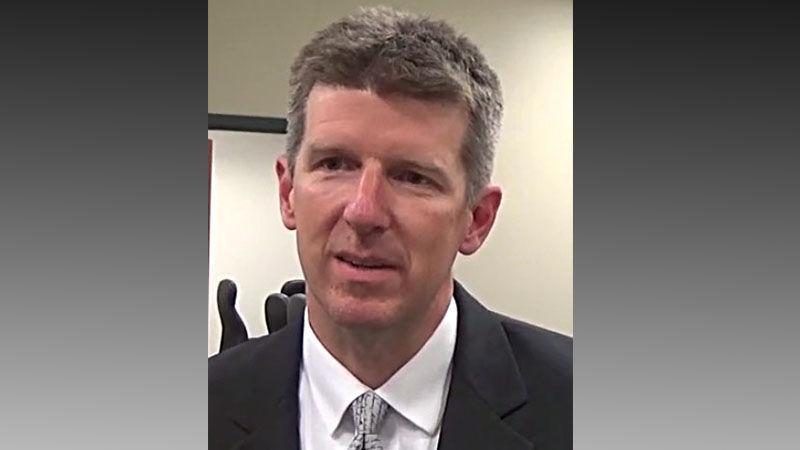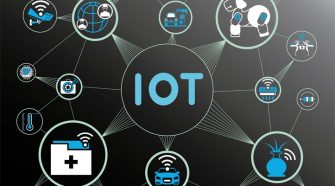Former Washington County Board of Education President Justin Hartings has served on the Maryland Board of Education since Gov. Larry Hogan appointed him in 2016. He just completed a one-year term as president of the state board, and recently sat down with Herald-Mail Media’s Tamela Baker to discuss statewide education issues.
Q: You were president of the state Board of Education for the last year. And of course, the big topic of conversation in the last year has been the recommendations from the Kirwan Commission and the legislation that was approved this year in the General Assembly. What’s your overall impression of that Kirwan report, and the blueprint that the legislators eventually pounded out as a result of that?
A: I think it’s very ambitious. It involves an awful lot of additional funding. But some things that I think can also have a big impact on students, I think you’re starting to see some of that already.
In Washington County, starting teachers got a very substantial raise, and teachers across the pay scale got a substantial raise. I think that’s very exciting.
The other part of that, though, is that the commission calls for raising the standard for what you need to do to be a certified teacher in Maryland. So some of those regulations are still in process. I think what’s going to be interesting to see over the next year or two is, Chairman Kirwan has been very clear, as have his (commission) members, that this is a package deal. It’s either all or it’s nothing. And as they’re doing the very critical work right now, of figuring out how to fund this very ambitious plan, I think we’re going to find out whether the funding can support the whole package. I think that’s what we’re all waiting to see, including me.
Q: One of the topics of course for local government officials is what are we going to have to ante up for this? And how are we going to come up with it? And in the meantime, Sen. (Andrew) Serafini has said more than once this is all well and good — and he voted for the blueprint — but are we really going to improve education if we just throw more money at it? Does he have a point?
A: Well, I know accountability is very important to the governor and to his administration, he’s made that very clear. It’s important to me as well. We continue to ask more and more, and in this case, we would provide an awful lot more funding. But I think that the public has a right to expect that they should see some results for the additional investment.
There’s lots of challenges that our schools face every day, and we shouldn’t be naive about that. But if we’re going to increase, by 25%, the state’s investment in education? I think the public has a right to be sure that, yes, the grand bargain that the Kirwan Commission is suggesting is in fact going to lead to better outcomes for students. And yes, I am concerned about that. I hope that’s high on everybody’s mind as we move forward.
I mean, the teacher preparation is one example, right? I mean, those funds are already allocated and expended. And those raises are going to staff starting in just a couple of weeks, which is terrific. But the regulations haven’t been passed that raise the standard. And that was sort of the bargain, which is higher standards, (then) more funds to try to make teaching a profession on level ground with engineers and architects and other professions that are recognized as prestigious in the community. And teachers should have that status in the community. But at this point, we’ve provided the funding, but not the additional standards that will get us there. So that gives me a little bit of pause.
But I’m hopeful that as we continue to move forward over the next year that the standards will meet the additional investment that we made.
Q: Let’s say for the sake of argument that they do. We’re talking in 10 years’ time, billions of dollars in new money. Are those costs reasonable, do you think?
A: I guess it’s an open question. If one had an additional, you know, $2 billion to $4 billion per year that one was going to invest in the state of Maryland, would it all go toward K-through-12 education? Those are policy decisions that I think are made by elected officials. I’m not one. As an advocate for education, I’ll say that I think if we invest wisely, and hold people accountable for those investments, I think improved educational outcomes will benefit the whole state.
Q: Let’s look at it from a slightly different perspective. You have had years of experience dealing with local government bodies and getting school budgets passed. Is it realistic?
A: That, I think, is one of the real complicated questions, because I think that depends on which county you’re in.
There are some counties that have made the decision that they are going to fund their schools at levels of low maintenance of effort. You see Frederick County in the last few years has made a substantial investment above a maintenance of effort in their schools. That’s their elected officials representing their county who made that decision. Other counties have made the decision not to do that. So that’s really where local control and local decision-making is going to guide this.
And as a state official, I think the best we can hope to do is provide incentives and make opportunities available to all of the counties, but I don’t think it’s my role at the state to come to Washington County, Garrett County, Montgomery County, any county and tell them how they need to allocate their resources.
I mean, the whole point of local control is local communities have different and diverse needs. And the local officials in those communities are the ones best able to make decisions about how they can meet those needs.
Q: One of the things that the Kirwan recommendations address is changing workforce needs and the impact of technology. A lot of people have been talking about the impact of technology on the future workforce and where industry is going, and it’s a frequent topic of discussion here as well. But how accurately can we predict what is going to be needed?
A: Anybody who could predict that wouldn’t be working in my job, they’d be on Wall Street making a lot more money than any of us are around here. So it’s always somewhat speculative. But you know, to me, there are two things that are important about that. No. 1 is building that relationship between the business community and the education community, which we talk about all the time. And I know it’s complicated, because as a business owner, of course, you want to help your community. But you’ve also got a bottom line to meet. So you’re interested in investing your time and energy, and things that will benefit the community, sure. But you have to believe that there’s a long-term commitment and a return on that investment. I think businesses are eager to do it. I think school systems are eager to do it. But it’s always been a challenge to get them to continue those communications over the long term.
The second thing is that, again, the differences in the different communities across the state — new and emerging industry in Garrett County may look very different than new and emerging industry in Prince George’s County. Prince George’s County has the Goddard Space Center. So their needs for technology and sort of creative 21st-century jobs are going to look much different than they will even in Washington County. With a growing cybersecurity education program here in Washington County, we have real opportunities there that maybe don’t exist in other communities.
So I think the key to that linking of career readiness coming out of high school is: one, work with the local business community; two, a good working relationship between the K-through-12 education system and the local community college, which in Washington County we sure do have; and No. 3 is recognizing that not each community has the same needs when it comes to developing a future workforce.
Q: Technology is obviously probably the biggest game changer, not only here, but everywhere. But beyond changing technology, what are the other challenges you see for educating students now?
A: One of the biggest things I hear as I go across the state is concerns about the disciplinary environment in schools. I mean, I hear that in Montgomery County, in Garrett County, on the Eastern Shore, I hear it everywhere. From teachers, to superintendents, to principals who are just consistently saying that they’re seeing things now from students at younger and younger ages, that they never would have seen even five years ago. And the challenge is how do you then create an educational environment that embraces our responsibility to educate every student, even those students who sometimes might behave in ways that we might not like? And I think it’s important that we do embrace that. That’s the promise of public education.
How do we do it in a way, though, that also ensures that every student can work in an environment that fosters their learning as well? As one superintendent said to me many, many years ago, every student has a right to a free and appropriate education. But no student has a right to keep another student from accessing their free and appropriate education. And what I like about that is it kind of shows the balance that you have to strike between ensuring that you’re including absolutely everyone, but also meeting your obligation to absolutely everyone. I’m not sure that we’ve got that right across the state.

















